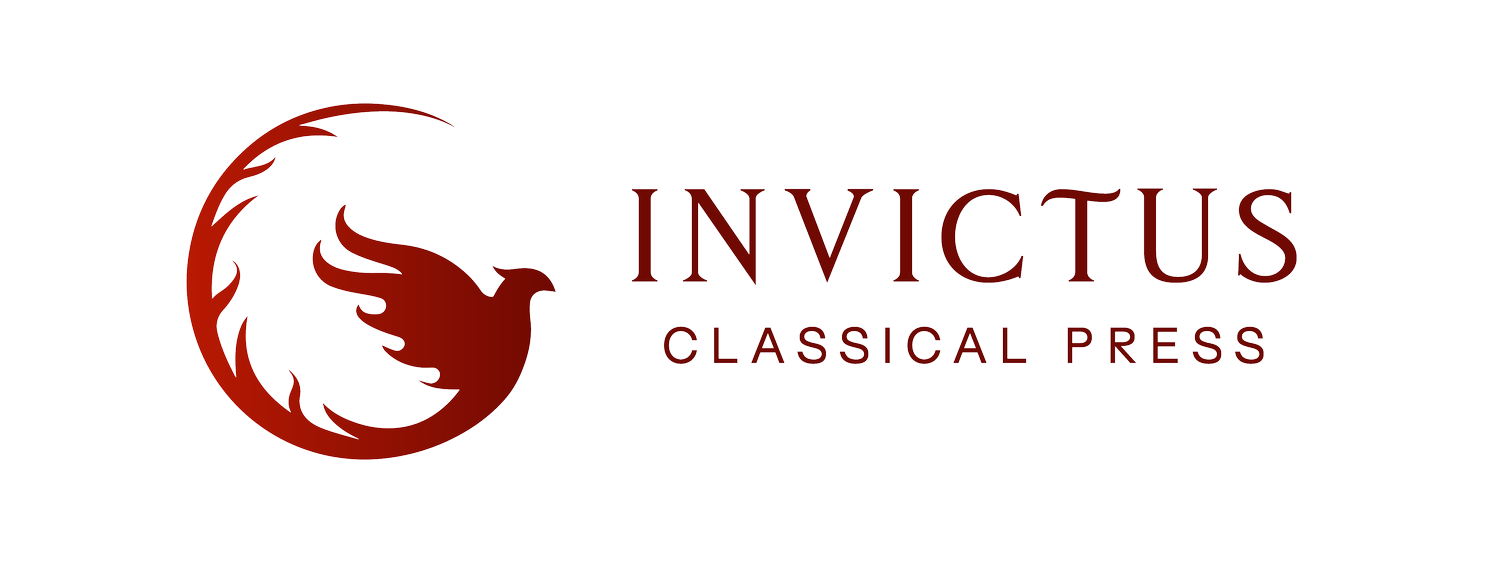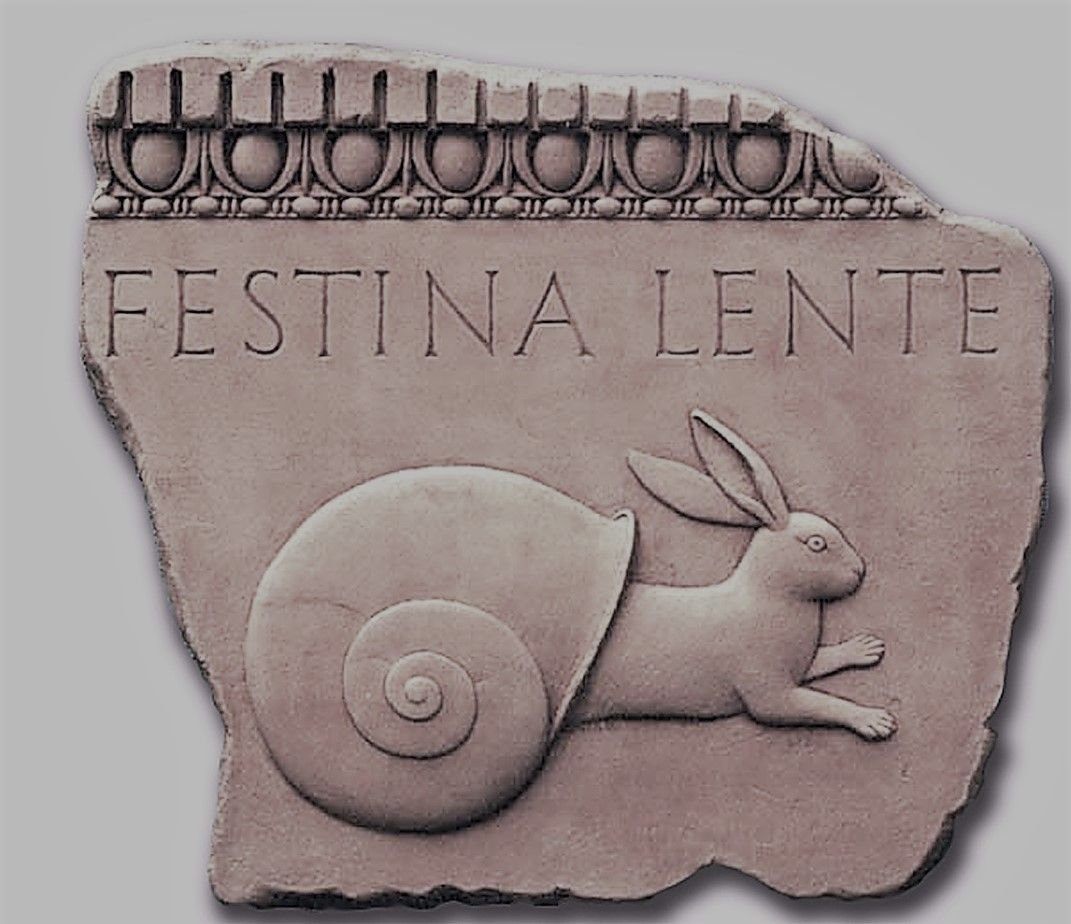What Does it Mean to Festina Lente?
By Nicole Henry
Dr. Christopher Perrin wrote An Introduction to Classical Education in 2004, almost 20 years ago. I read it when it first came out and have revisited it several times since. I very much appreciate both the short, succinct history of classical education and how we ended up where we are today and the breakdown he offers of how the Triviumworks in today’s modern classical schools. He relies, as does Doug Wilson in his book, Recovering the Lost Tools of Learning, on Dorothy Sayer’s brief essay The Lost Tools of Learning, written in 1947, to argue the case for a return to the age-old classical model. Perrin states: “The modern experiment in education… is about 100 years old, and flagging. The classical experiment is about 1000 years old and reviving (19).”
In this post I would like to consider some of the ways that Dr. Perrin has expanded his classical vision in the last 20 years. There has been tremendous growth in the classical movement over the past two decades and institutions that have delved deeply into the roots of classical pedagogy have realized that though we owe much to Sayers for her essay, and Doug Wilson for his flagship work at the Logos School, there is always the opportunity to go “farther up and farther in.” Dr. Perrin is entirely correct that the classical experiment is “reviving” (an ongoing process) – there is still a lot of work to do and many layers to uncover as we work through how to put metamodern flesh on the bones of classical education.
Dr. Perrin is not only known for his seminal work, An Introduction to Classical Education, he is also known for, later on in his career, outlining eight essential principles of classical pedagogy (and two add-ons). These include:
Festina Lente (Make haste slowly)
Multum non Multa (Much not many)
Repetitio Mater Memoriae (Repetition, the Mother of Memory)
Songs, Chants, and Jingles
Wonder and Curiosity
Educational Virtues
Embodied Education
Scholé/Contemplation/Leisure
Docendo Discimus (By teaching we learn)
Optimus Magister Bonus Liber Est (The best teacher is a good book)
This post will focus on the first principle: Festina Lente.
What does it mean to “make haste slowly”? InThe Twelve Caesars, Suetonius, the Roman historian, writes that this adage was a favorite of Augustus, who deplored hasty decision making in his military commanders and favored wise deliberation before swift decisive action. So loved was it that he had images representing it minted on his coins: the crab and the butterfly, a hare in a snail shell, and the most famous: a dolphin entwined around an anchor. These juxtaposed images seem strange to our modern eyes – a dolphin and an anchor?! – but when considered thoughtfully, the meaning emerges.
Consider: Dolphins represent speed, agility, intelligence, and swiftness in the water, so the dolphin in the emblem symbolizes the element of speed and haste, representing the idea of progress and movement toward a goal. It embodies the desire to achieve objectives efficiently, effectively, and speedily.
In contrast to the dolphin's swift and agile nature, the anchor represents stability, security, careful consideration, and rest. Anchors are used to keep ships steady and prevent them from drifting aimlessly in the vast ocean. They provide a sense of security and control, especially during storms and uncertain conditions, and they allow sailors a respite from the elements – time to think, and even to enjoy their time at sea.
The anchor in the emblem symbolizes the need for stability, reflection, and prudence. It sinks deeply into the sea bed and encourages individuals to pause, reflect on their actions, and make deliberate choices rather than rushing into situations without careful thought.
Together, the dolphin and the anchor present a powerful juxtaposition. The emblem signifies that while there is a desire to make progress swiftly like the agile dolphin, it is equally important to anchor oneself in prudence and careful consideration, just like a ship in turbulent waters. This duality implies that one can achieve success and move forward while also being mindful of the process and avoiding reckless haste that will leave one vulnerable to outward forces.
But what has this adage to do with classical education? From my experience, many classical schools tend to “make haste quickly.” Perhaps this is because, even now, some decades after the classical renewal began, most people in the administration and on the faculty were not classically educated themselves, so they operate under the assumption that they must make the students “do all the things” (and at an accelerated pace), that they missed out on. Perhaps it is because there tends to be an inherent pride within the classical renewal such that the longer the book list, the quicker the pace, and the higher the grades and test scores, the “better” the school is.
Classical schools with shorter book lists, a slower pace, and average grades and test scores are derided as “less rigorous,” “classical-lite,” or even “not really classical at all.” (I have heard all of these and more) I believe this tendency can lead to students to become overburdened, exhausted, burnt out, and apathetic. There is no joy in learning left. There is only the next book, the next paper, and the next test - all boxes to be checked to get the good grade, to get the good college, to get the good job; to get the good life. Ironically, classical schools tend to fall into progressive patterns where utilitarianism is paramount. The question is not “How can this education make me free?” but “How can I use this education to get what I want?”
Charlotte Mason, the renowned 19th century British educator, challenges educators with this series of questions: “The question is not, -- how much does the youth know? when he has finished his education -- but how much does he care? and about how many orders of things does he care? In fact, how large is the room in which he finds his feet set? and, therefore, how full is the life he has before him?”
I fear that unless classical schools learn tofestina lente– and quickly! – we may begin to see high disenrollment numbers, especially between 8thand 9thgrade, and a backlash of graduated high school students in the coming years who choose undergraduate schools that will afford them a “break” from what they have known previously instead of choosing liberal arts colleges that offer the Quadrivium where the fruits of a classical education can truly be seen, tasted, and enjoyed.




